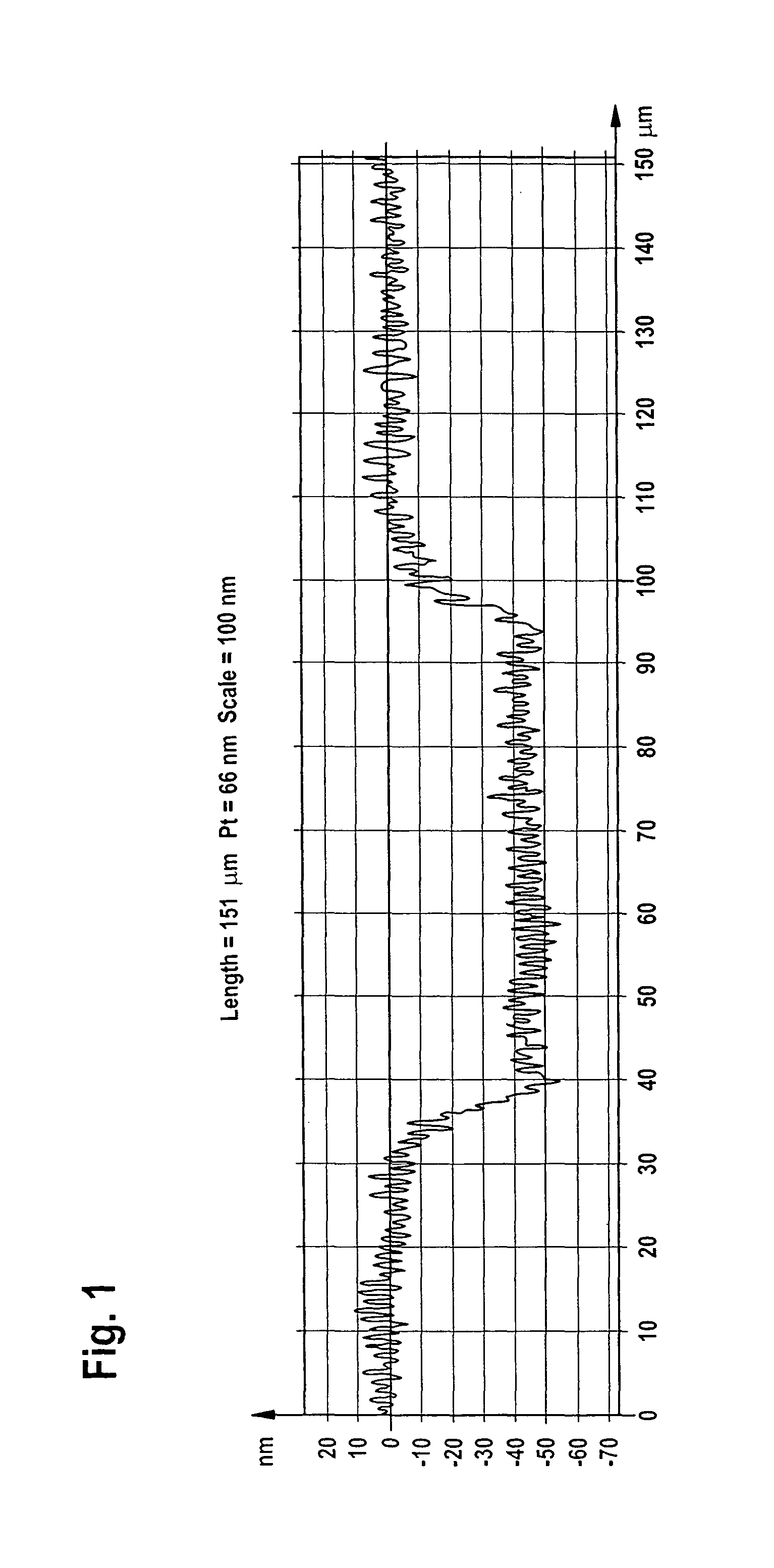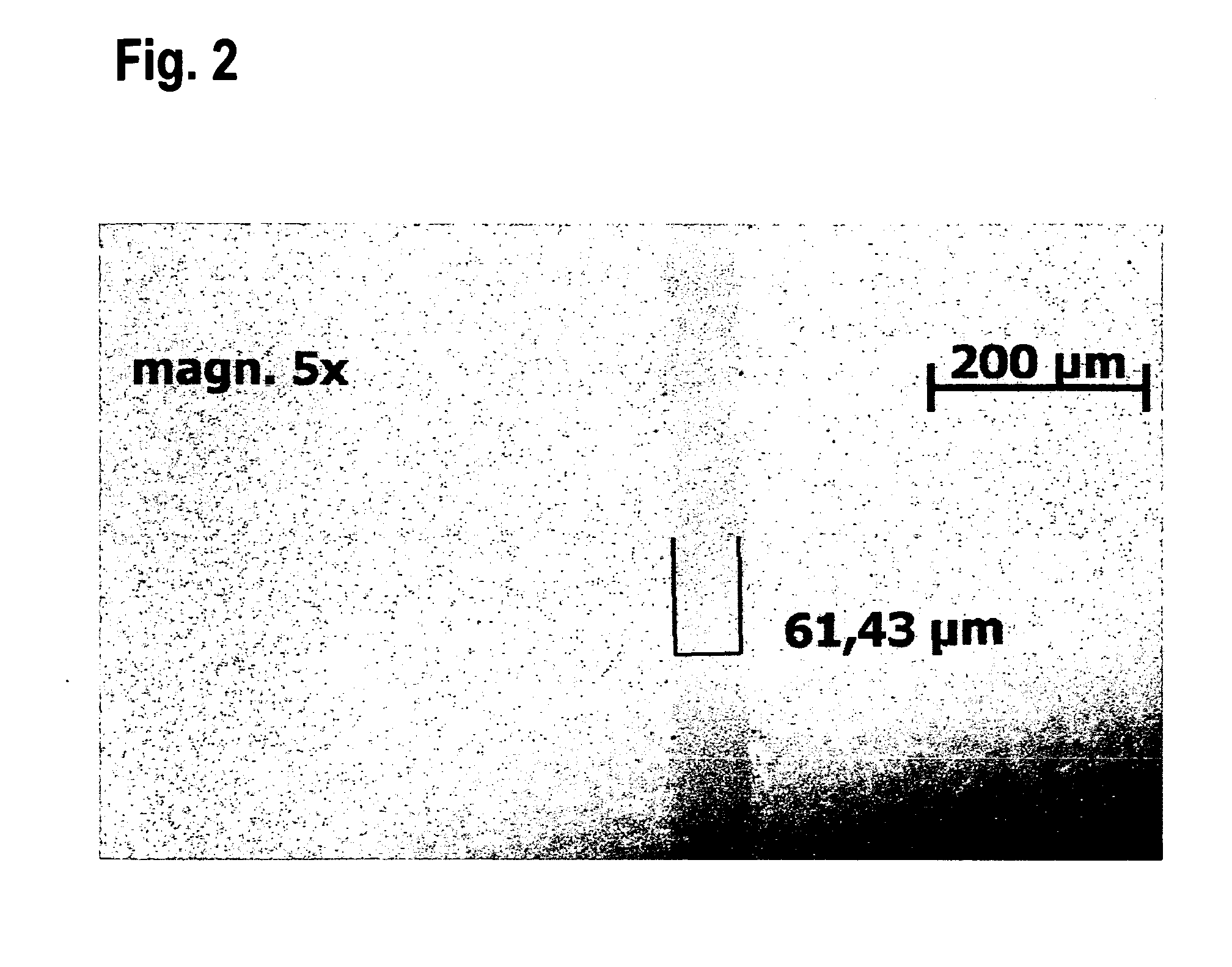Selective etching of a matrix comprising silver NANO wires
a silver nano wire and selective etching technology, applied in the direction of surface treatment compositions, non-conductive materials with dispersed conductive materials, chemistry apparatuses and processes, etc., can solve the problems of time-consuming and expensive, material-intensive, time-consuming and expensive etching methods, etc., to achieve high throughput and cost-effective
- Summary
- Abstract
- Description
- Claims
- Application Information
AI Technical Summary
Benefits of technology
Problems solved by technology
Method used
Image
Examples
example 1
Best Mode
[0133]15 g Ethylenglycolmonobutylether
[0134]15 g Triethylenglycolmonomethylether
[0135]29 g Polycarbonat
[0136]72 g Ameisensaure
[0137]30 g DI Water
[0138]16 g Ammoniumhydrogendifluorid
[0139]46 g Polyvinylpyrrolidon (PVP) K-120
[0140]60 g Vestosint 2070
[0141]The compounds are successively mixed with each other. After standing for some hours the paste can be printed.
[0142]FIG. 1 shows the measured etching profile achieved with a composition according to example 1 and where a AgNW comprising polymer layer is etched at room temperature for 1 minute.
example 2
[0143]30 g Ethylenglycol
[0144]29 g Polycarbonat
[0145]72 g Ameisensaure (100%)
[0146]30 g DI Water
[0147]8 g Ammoniumhydrogendifluorid
[0148]8 g Polyvinylpyrollidone
[0149]75 g Vestosint 2070
example 3
[0150]33 g H3PO4
[0151]36 g 1-Methyl-2-pyrrolidone
[0152]13 g DI Water
[0153]8 g Polyvinylpyrollidone
[0154]3 g Graphite
[0155]The etching composition is mixed as described above. The result is a printable etching composition.
PUM
| Property | Measurement | Unit |
|---|---|---|
| temperature | aaaaa | aaaaa |
| diameter | aaaaa | aaaaa |
| diameter | aaaaa | aaaaa |
Abstract
Description
Claims
Application Information
 Login to View More
Login to View More - R&D
- Intellectual Property
- Life Sciences
- Materials
- Tech Scout
- Unparalleled Data Quality
- Higher Quality Content
- 60% Fewer Hallucinations
Browse by: Latest US Patents, China's latest patents, Technical Efficacy Thesaurus, Application Domain, Technology Topic, Popular Technical Reports.
© 2025 PatSnap. All rights reserved.Legal|Privacy policy|Modern Slavery Act Transparency Statement|Sitemap|About US| Contact US: help@patsnap.com


